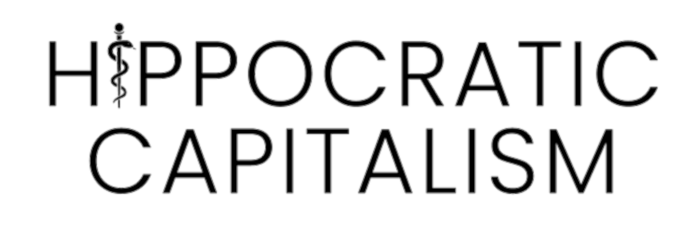"Coding Destroys Everything"
3 July 2023
When you think about the root causes of dysfunction in US healthcare, what word comes to mind first? A lot of Americans would say cost (or cost inflation). Policy people would likely say access (probably followed by cost). Based on their personal experiences working in healthcare, physicians might say corporatization (or in some cases, private equity https://www.kevinmd.com/2021/10/why-private-equity-is-a-dangerous-employer.html). But in a recent interview with Becker’s Hospital Review, former health system CEO Michael Connelly said coding. More specifically, he said “Coding destroys everything.”
Connelly should know what he’s talking about. He has serious hospital leadership credibility, having been CEO of Cincinnati’s Mercy Healthy from 1995 to 2017. (Note that according to this report https://www.ache.org/about-ache/news-and-awards/news-releases/2022-releases/hospital-ceo-turnover-rate-remains-steady from the American College of Healthcare Executives, the typical hospital CEO lasts a bit under 5 years. So Mercy’s board must have been awfully happy with Connelly to keep him on for over two decades.)
Connelly’s arguments fall into four categories:
1. The size of the hospital revenue optimization industry, AKA Revenue Cycle Management, or RCM, is enormous and growing. Though Connelly doesn’t come out and say it quite this directly, once industries exceed a certain size, they get really good at self-perpetuating. Some of this occurs through regulatory lobbying, and some is due to embedding themselves into companies’ core processes. It’s similar to how management consultancies such as McKinsey, Bain, and BCG have made themselves indispensable to corporations and governments around the world (Here’s a review of Mariana Mazzucato’s book on this topic). Or how the tax preparation and tax prep software industry in the US has resisted the kinds of tax filing simplification that is mainstream in other advanced economies, but remains stubbornly absent in the US. Here’s a report prepared by Elizabeth Warren’s senate staff . (Intuit, the vendor of category-leading TurboTax, had annual revenue of $13B last year, with a market cap of $130B. Modest by healthcare industry standards, but large enough to have a big impact.) But back to the healthcare industry: Between the revenue cycle consultants, the software vendors, the hospital and clinic rev cycle departments and employees, and the providers of coding training programs — all of this adds up to a mammoth industry that has a mammoth stake in perpetuating coding as the foundation of US healthcare payment.
2. Coding significantly reduces clinical efficiency. Physician time is a limited resource and a key constraint within the healthcare system. It’s therefore critical to maximize the clinical value delivered by each physician during their working hours. Connelly estimates that physicians spend 46% of their time on coding. Now, clearly he doesn’t mean 46% of their time actually selecting or reviewing codes; he appears to mean 46% of their time on tasks that are directly driven by coding. He uses the example that talking with patients is uncoded and thus unreimbursed. So again, it’s an argument that coding distorts the activities and time prioritization of the most central actors in the system. Another illustration of this effect: Online communication with patients really took off during the COVID-19 pandemic as certain regulatory constraints to telehealth were relaxed. That’s a great thing, right? Convenient and efficient for both patient and physician. But now even emails are getting coded and billed, which leaves patients wondering whether to risk messaging their doctor when they have a question. Check out this page from the Cleveland Clinic, and see if you can figure out how much you might have to pay when you email a provider (hint: you probably won’t be able to).
3. Insurance companies use coding as a tool to increase claim denials. Insurance companies use the complexity of the system to their advantage, often routinely denying payment based on opaque internal algorithms, which in turn are based on billing codes. As Connelly describes, “Medical necessity” has become outright manipulative. At this point, you may be wondering what percentage of claims get denied? One estimate is 20% on average, but sadly, getting payer-specific numbers is in most cases impossible (this excellent ProPublica report explains why.)
4. Coding increases administrative costs. When every insurer has a different set of coding rules and policies, it drives the already high administrative cost of US healthcare even higher. Even if all payers simply had to follow Medicare’s rules, that would be complex enough. By one estimate, over a fourth of US healthcare expenditures are administrative, which comes out to thousands of dollars per person per year. In Japan, by comparison, billing processes are much simpler; they spend less than 2% of healthcare expenses on administration.
Summary:
- The US system for managing healthcare billing, aka “Coding,” is incredibly inefficient, and it’s a key driver of inefficiency in healthcare delivery.
- Because it drives revenue, coding complexity (and the inefficiency that comes with it) is a feature, not a bug, from the perspective of insurance companies as well as certain key suppliers to the hospital industry.
- Other high-income countries don’t have this problem, proving that the US doesn’t need to have it either.
For more on how the health plan industry drives up overall healthcare costs, check out this other recent newsletter.
